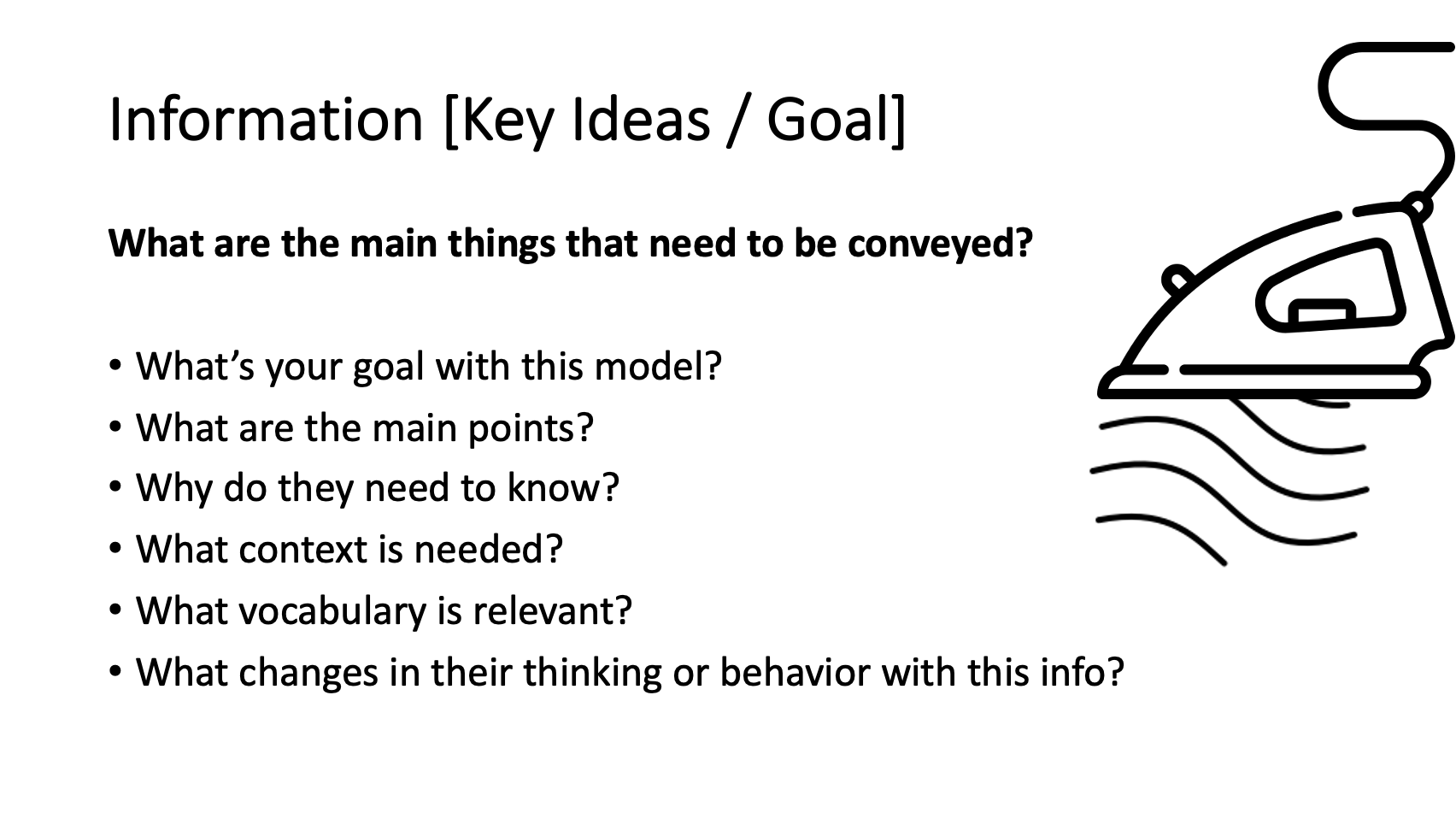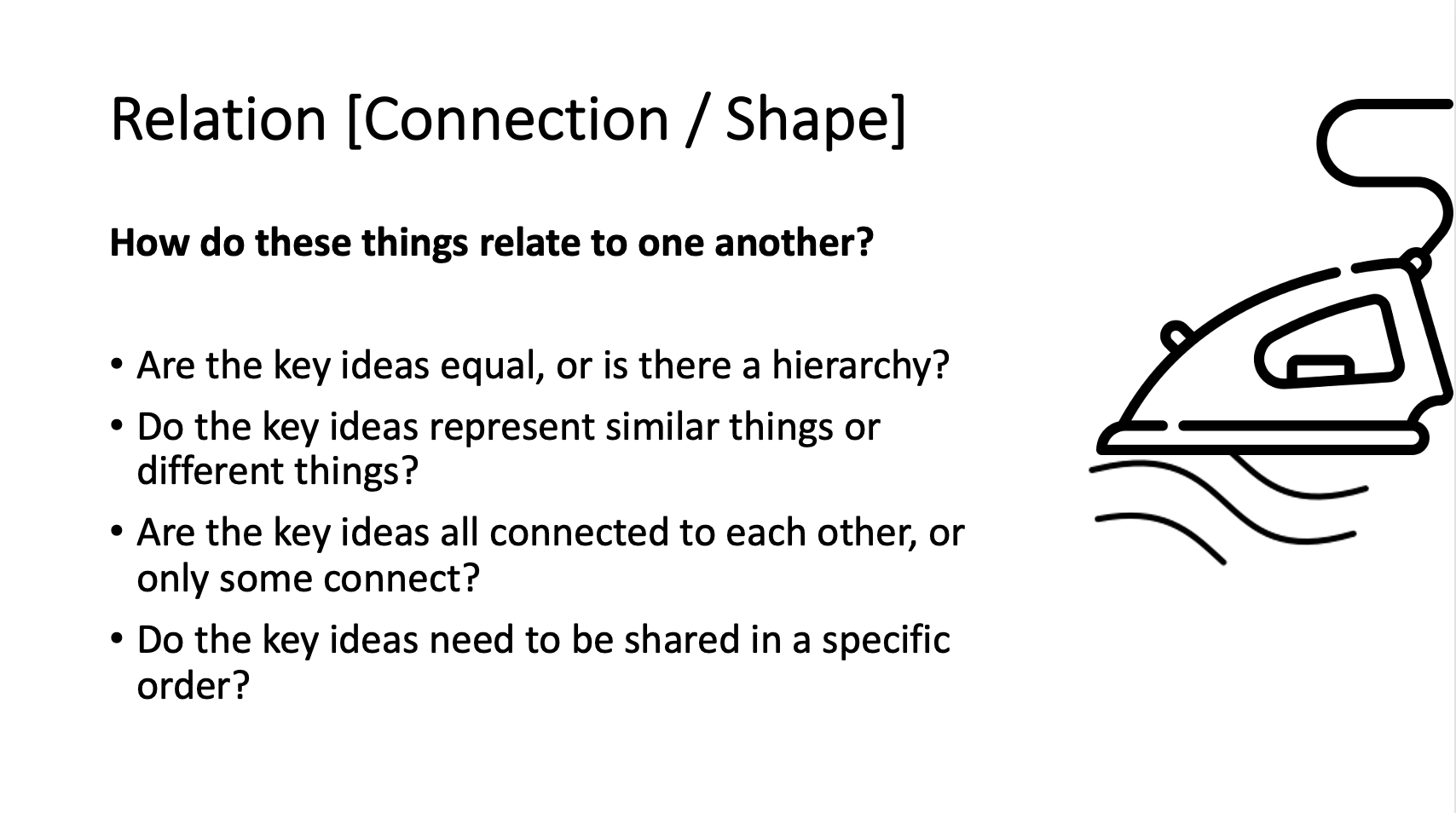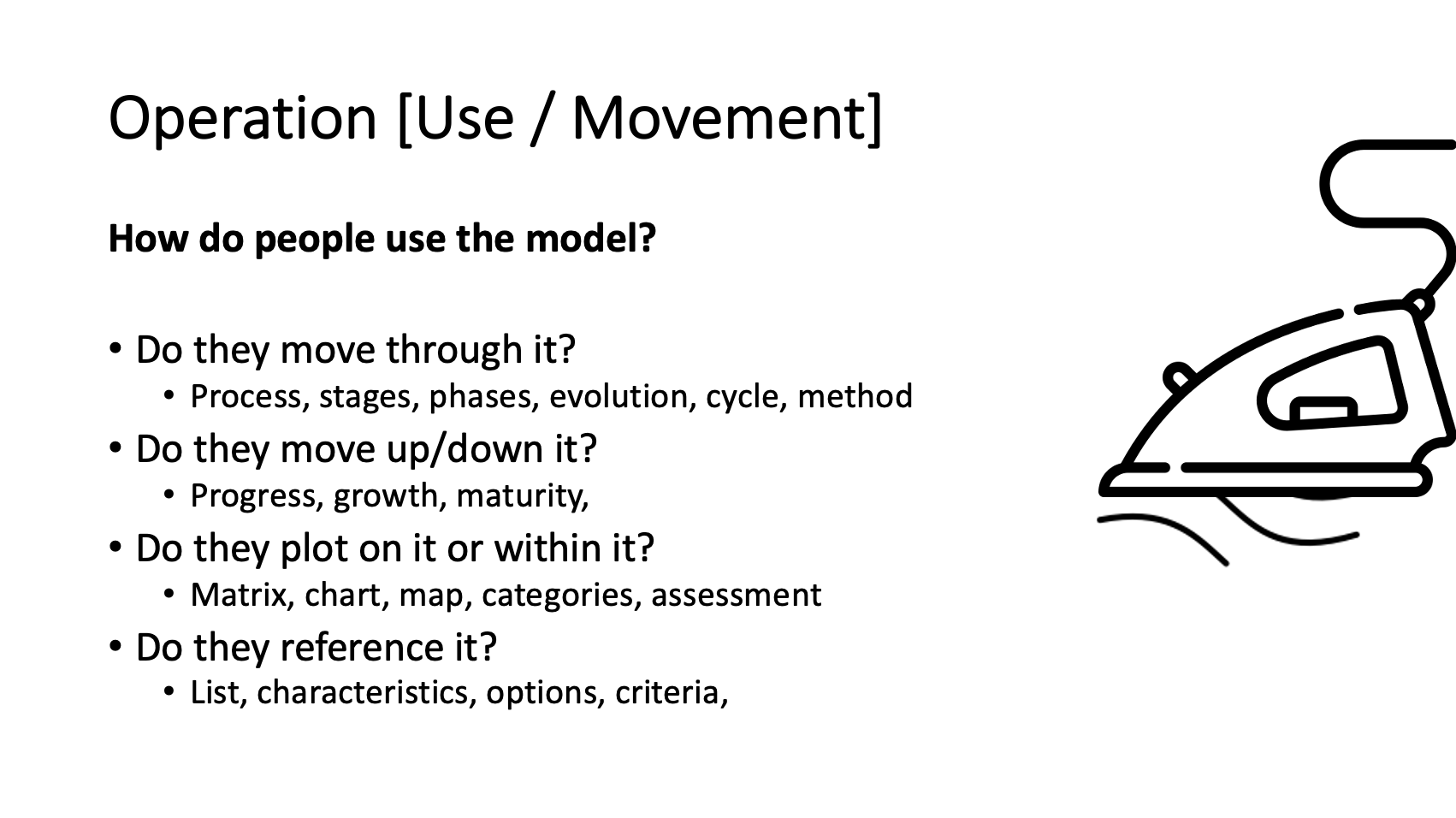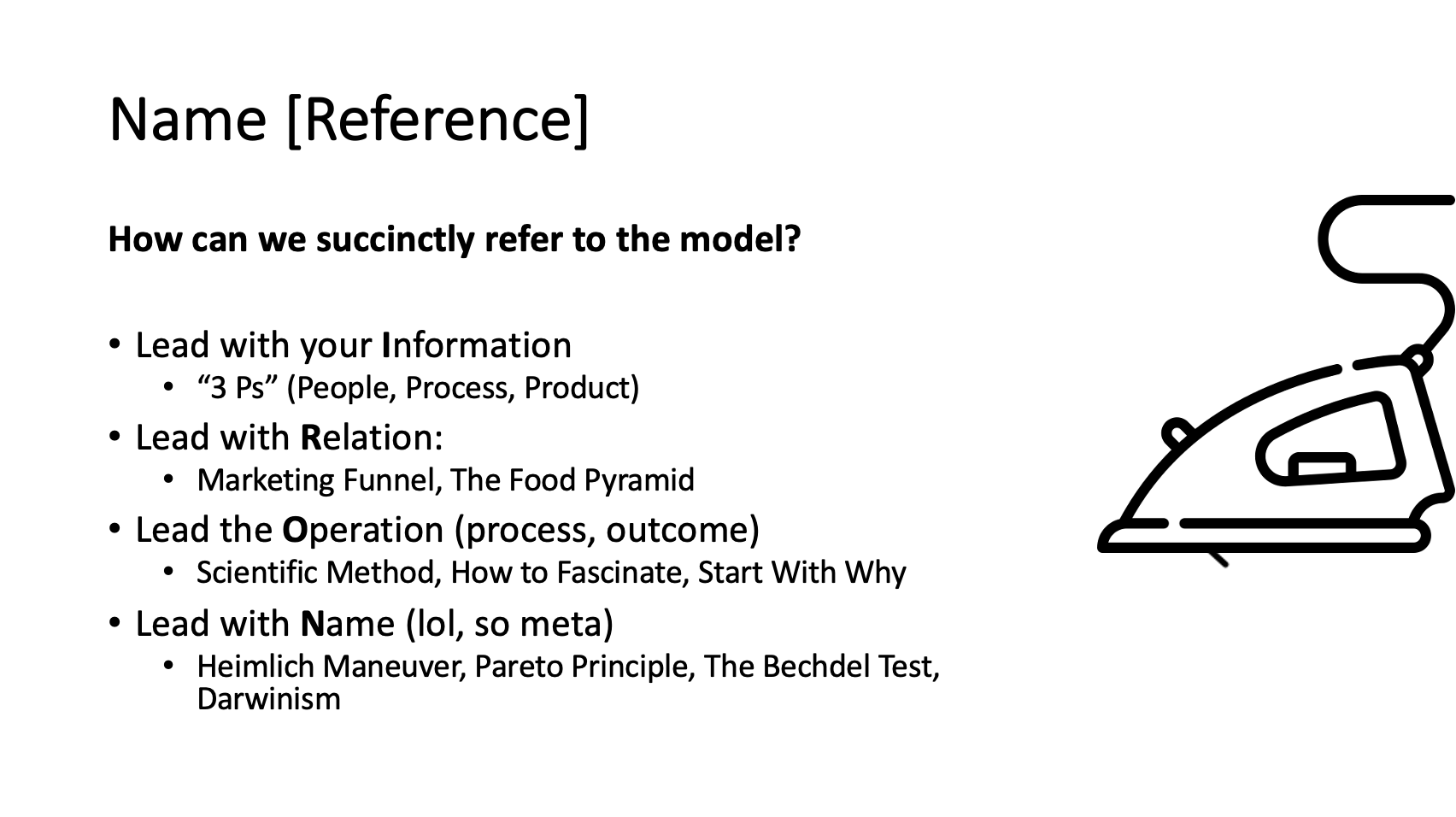About This Menu:
The way you think, the processes you use and teach, and your unique perspective on your work and your space are can all be amazing tools to help build your brand and grow your business.
They can form the basis of a book, the content of a keynote presentation, inform a podcast premise, and more.
But in order for your big ideas to have this type of important role, they need to be clearly articulated, easy to explain and remember, and useful enough to catch on.
This menu guides you to explore you biggest ideas, perspectives, processes, and other proprietary information, to organize those ideas into a clear an concise visual model, and to brand that model for easy use in your work, in positioning yourself, in building new products and growing your word of mouth.
🎓Masterclass
Modeling & Branding Your Big Ideas: Building structure around the concepts, perspectives and processes that form the foundation of your work and business.
🎓Framework Workshopping Masterclass
In this session, Melanie starts with an overview of the IRON model shared in the above Masterclass, and then shares several models created by chefs here in the Kitchen, offering observations, feedback, and opportunities to build.
🎓 guest chef Andrew davis on visionary ideas
Renowned speaker and creative thinker, Andrew Davis, joins the Kitchen for a discussion and Q&A on how your big ideas help you stand out and move from expert to visionary.
🎉 Group Call Sharing Frameworks
At the end of the menu, we all get together to review what we learned, celebrate our wins, discuss our growth and generally just soak up all the delicious creator vibes of the community.
👨🏻🍳 Video Tutorials
💡 prompts
-
Here’s some things to consider while you’re trying to determine what intellectual property you have that you might be able to turn into a branded model:
What’s something unique that you provide or teach to clients, students, members, or other audiences?
What processes do you follow routinely, or instruct others to follow?
What do you do that’s different from others in your space (your unique perspective, approach, process, system, etc.)
Is there something you often sketch out when explaining your ideas? (a chart, process, flow-chart, etc.)?
If you had to distill what makes you different or special down to a phrase, what would that phrase be?
Do you have any rules, requirements, minimums, maximums or other limitations that you abide by or share?
-
What is the focus or goal of the model?
What information will the conceptual model represent?
Who’s the primary audience for the model?
How will the model be presented/shared?
-
Is the model conveying the necessary information?
Is any navigation or movement through the model clear?
Is the target audience likely to understand the language or imagery in the model?
Does the model make the concept simpler and easier to convey?
Does the model make the concept more memorable?
Prompts from the Masterclass:





📂 Resources
🔗 https://visualframeworks.com/
📄 10 Visual Models That Simplify Complex Ideas (Product Coalition)
▶️ Adding Layers to Your Models [9:07] (Million Dollar coach)
📚 “Super Thinking: The Big Book of Mental Models” Lauren McCann & Gabriel Weinberg
📚 “Find Your Red Thread: Make Your Big Ideas Irresistible” Tamsen Webster
📚 “Hello My Name is Awesome: Creating Brand Names That Stick” Alexandra Watkins
✅ Branded Model Examples
Rather than simply use as inspiration (though that too), consider how you might use the underlying structure or general visual impact of models like these in your own work.
Common Thought Models: Pareto Principle, Occam’s Razor, Recency Bias, Confirmation Bias, Sunk Cost Fallacy
Common Visual Models: Maslow’s Hierarchy of Needs, Eisenhower Matrix, Food Pyramid / MyPlate
The Content Fuel Framework (Melanie Deziel)
How to Fascinate (Sally Hogshead)
The Red Thread (Tamsen Webster)
Find more examples here:












